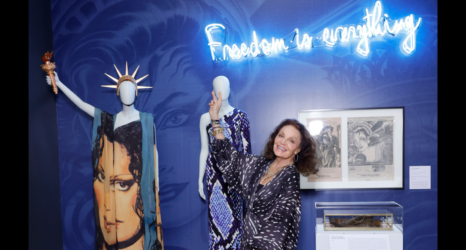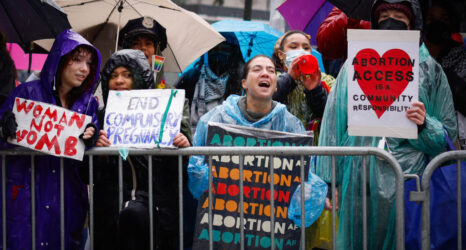Since I couldn’t find a book about global young women’s activism, other than regional studies, I traveled to hot spots for democracy uprisings like Cairo, Istanbul and Athens to talk with the new generation of feminists, struck by their courage. I surveyed or interviewed over 4,000 young people from 88 countries and reported on what they said in six books such as Ageism in Youth Studies; some are still in draft form available for your feedback. Part of series on youth activism, Brave: Young Women’s Global Revolution is available as two volume inexpensive eBooks since I think books should be affordable. Many of the video interviews are available on the TheGlobalYouth YouTube channel.
Here’s an example of a teenager I interviewed for Brave. Why would Yara, a middle-class girl living in Cairo, risk her parents’ disapproval and worry, as well as her life, by demonstrating daily in Tahrir Square in 2011? Conducting “history from the bottom,” listening to those who are not famous “great men” to find out what influenced an activist teenager, I interviewed Yara on Skype and in emails. She describes her experiences as a revolutionary. Yara’s mother is very religious and wears hajib headcovering, but Yara is an agnostic who doesn’t cover her hair and is not constrained by traditional religious beliefs that girls should stay at home. She doesn’t think it’s fair to condemn someone to hell just because they don’t have certain religious beliefs. As a scientific person, she believes in Newton’s law of conservation of energy, which she says can be called God. Her parents’ education and class status enabled her to get a good education what supported her activism. Like her mother, Yara is a “science geek” who would like to major in physics or astronomy when she enters university.
Yara said the January 25 revolution wasn’t made by the hungry, but was led by well-educated people like herself in a country where over a third of females and 18 percent of males are illiterate. In rural areas girls leave school early to get married, which is in stark contrast to Yara’s urban education, and two million women have never been in school. Unlike village girls, her father keeps Yara informed about political issues. She thought she would have to leave Egypt to order to make a difference because so many people supported dictator Hosni Mubarak because he was a familiar father figure.
Yara was 14 and 15 when she went to the streets and slept in a tent in Tahrir Square during the revolution, although Egyptian girls do not sleep in mixed sex gatherings. She knows martial arts, so the last man that tried to sexually harass her ended up with a broken hand. She saw people killed by police gunfire, including one of her friends. Their deaths made her want to complete their goals even if it meant she would also be killed.
Yara and many of her peers around the world abhor the traditional cycle they are taught to follow: go to school, get into a good college, do a boring job, marry and have kids. They’re ambitious and give each other courage to rebel through their global social networks. Yara is fascinated with Harry Potter books and films, the British hero and role model who routinely defies authority and succeeds.
Yara views herself as strong-willed and altruistic: “I’m the passionate outspoken girl, who will tell you exactly what’s on my mind.” She views herself as full of contradictions such as, “I’m the shy, awkward kid, who still steps up to steer. I’m the introverted social butterfly. I’m the girl who believes that helping people is her solitude. I’m the hotheaded politician who still believes in utopia. I’m the down-to-earth type of person who refuses to take a back seat.” As the first-born in her family with a younger sister and brother, Yara is expected to achieve (influence 5). She’s determined to do well—a trait often associated with high-achieving firstborns. A pattern for successful women is having an appreciative father whom the girl identifies with, rather than the mother. Yara’s encouraging relationship with her father is similar to Malala Yousafzai, as described in her autobiography I Am Malala (2013).
After the Tunisians succeeded in expelling their corrupt president, Egyptian youth gained the confidence to take action. Yara reported, “People felt and understood we are the power.” She thought of the Egyptian people as uneducated, but after the demonstrations she saw a different side of people as she stood side by side with girls who were on the front lines and with Christians and Muslims guarding each other during prayers. After January 25 she witnessed great positive energy as people cleaned up the square and painted the walls; she observed, “Everyone was trying to do something.”
Yara was in Tahrir Square on the first day of the 2011 revolution, right after she took an exam in her high school. She was involved previously with political groups like the April 6 Youth Movement and had some connections with the administrators of the We Are All Khaled Said Facebook page. That page changed public opinion with its photos of the battered young middle-class man killed by police. She said a lot of people administered the Khaled page. Her group of activists thought about 200 people would show up in Tahrir Square on January 25, but by around 3:00 PM they heard the ground shaking and were shocked when 80,000 people came to the square.
In 2013, Yara joined approximately 100 people who organized a petition-drive led by a youth group called Tamarod to unseat President Mohamed Morsi after a year of his presidency. They created a circle of over 1,000 people around the country to collect signatures on petitions for Morsi to resign. Yara said about 40 percent were girls. She explained that Egyptians are not extremist Muslims, so they got tired of the Muslim Brotherhood accusing people of being atheists. Her mother doesn’t cover her face with a niqab that only shows the eyes and was therefore accused by some of being an atheist.
Tamarod’s plan was to show the people that “a bunch of kids” could challenge the Muslim Brotherhood’s long-established structures and weaponry. The youth group gathered more than 22 million signatures, although they didn’t expect to influence President Morsi who they said did not follow the constitution. Youth activists were unhappy to discover that Tamorod had been infiltrated by military intelligence in March and funded by the security forces to use Tamorod to oust Morsi. Tamarod wanted to show that the people owned the streets and Tahrir Square, but during the July 2013 demonstrations that ousted President Morsi, sexual harassment was worse than ever. Yara went to the square with her father but demonstrators begged him not to go into the square with her because of the violence. After the military coup and rule by General el-Sisi who was elected president in 2014, she’s discouraged and believes that the people want a strongman ruler rather than democracy.
Social Movement Theory emphasizes the importance of resources to be successful, including organizations, material such as money, moral advantages and human volunteers. Yara didn’t act alone, but was part of revolutionary youth groups such as the April 6 Youth Movement and Tamarod. She’s currently discouraged about being a changemaker, but just as rain fills a previously dry riverbed, she’s built a habit of activism that can be renewed. After the revolution, she started teaching low-income girls, typical of her generation’s altruism.
Yara illustrates the factors that encourage contemporary youth activists: education, a feminist parent, media role-models of rebels, Internet and cellphone communication with peers, feeling deserving of human dignity and anger about injustice.
You can share your ideas about youth activism with Gayle here.





